
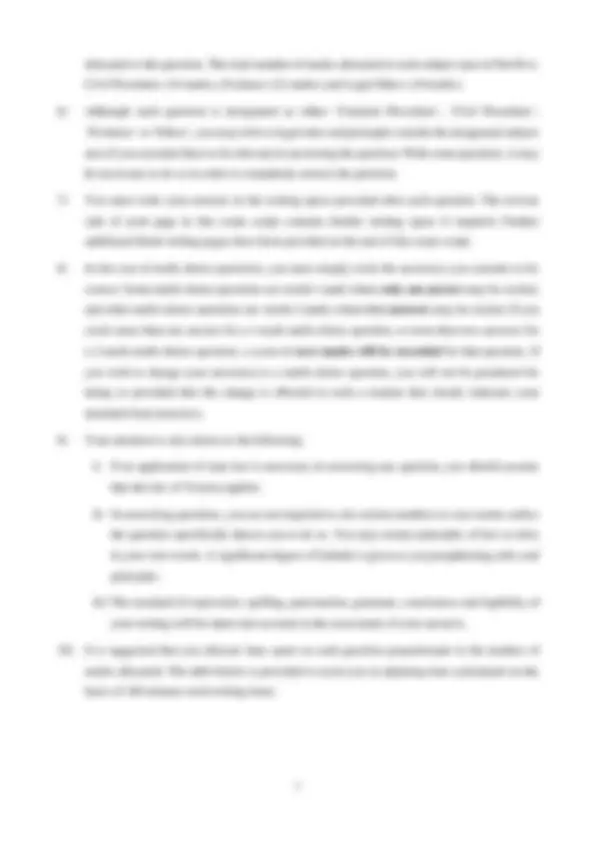
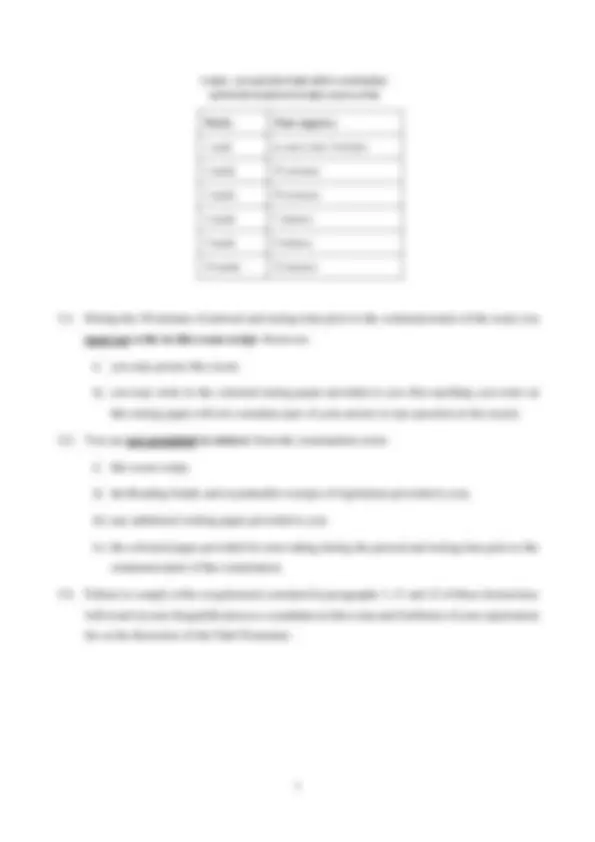
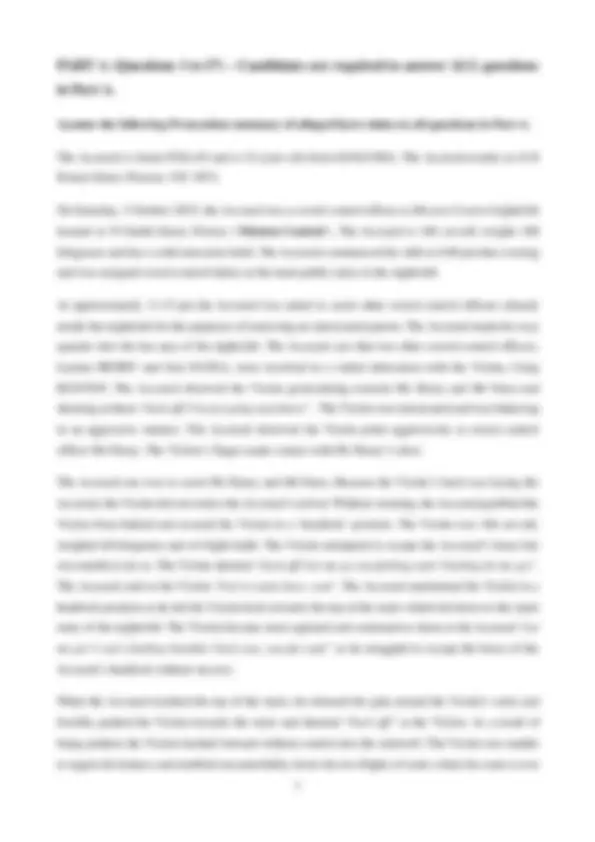
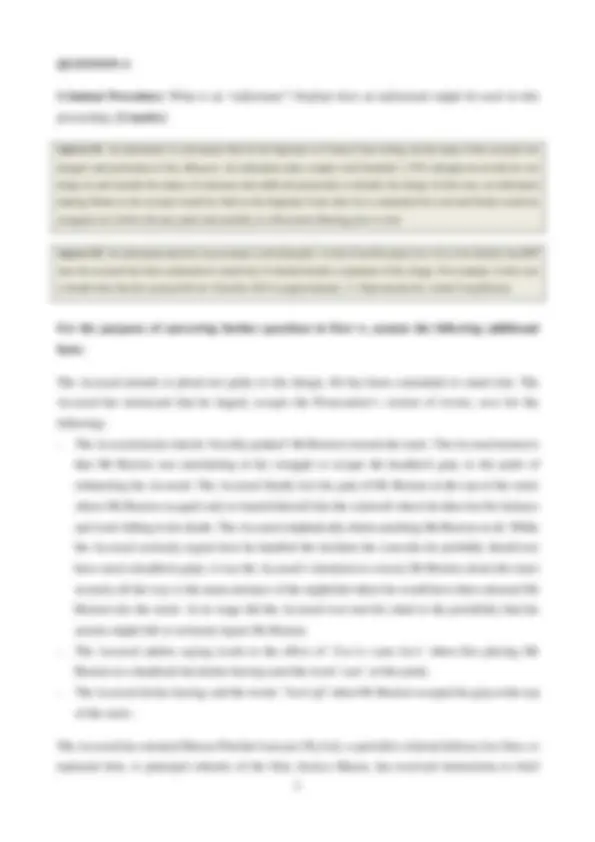
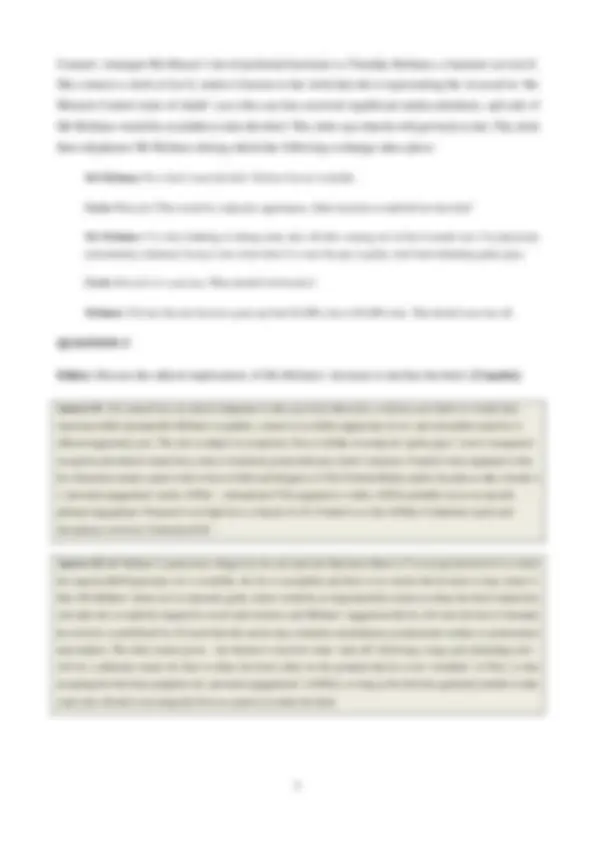
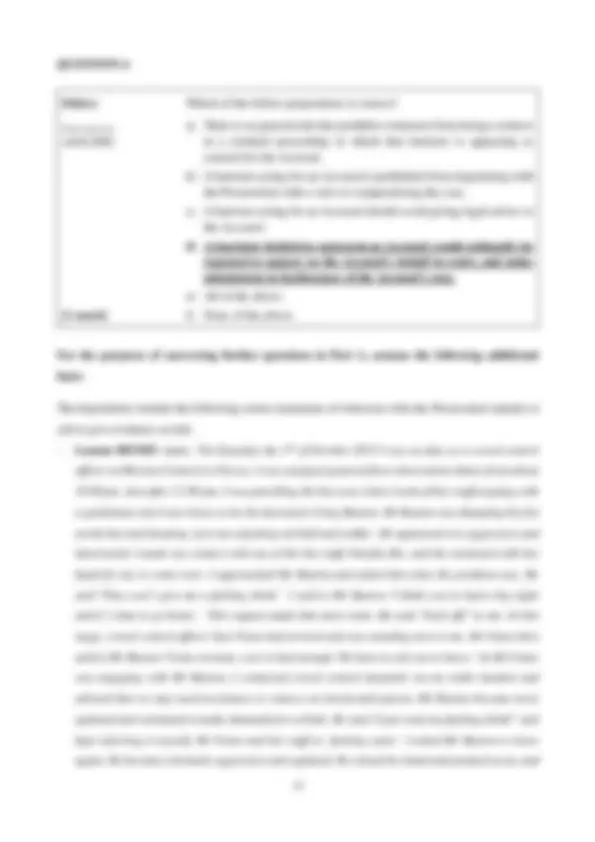
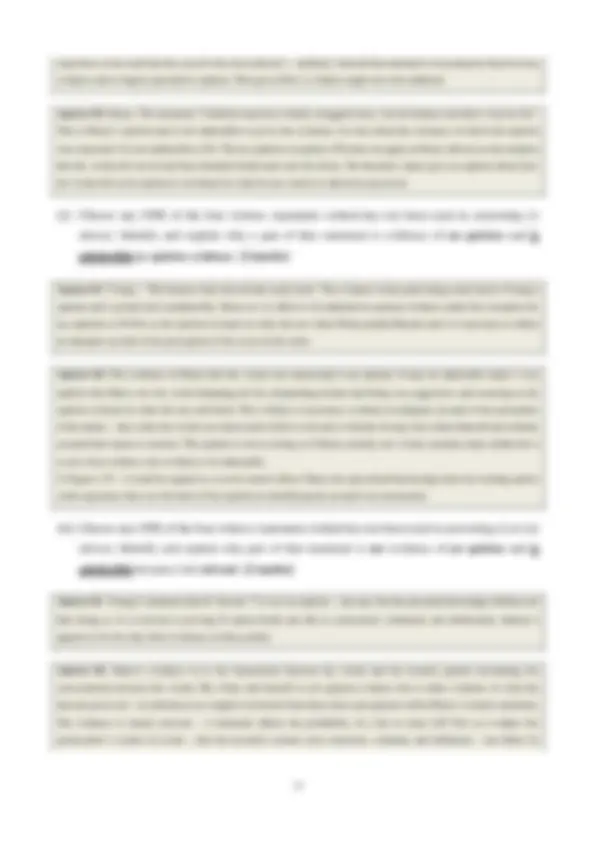
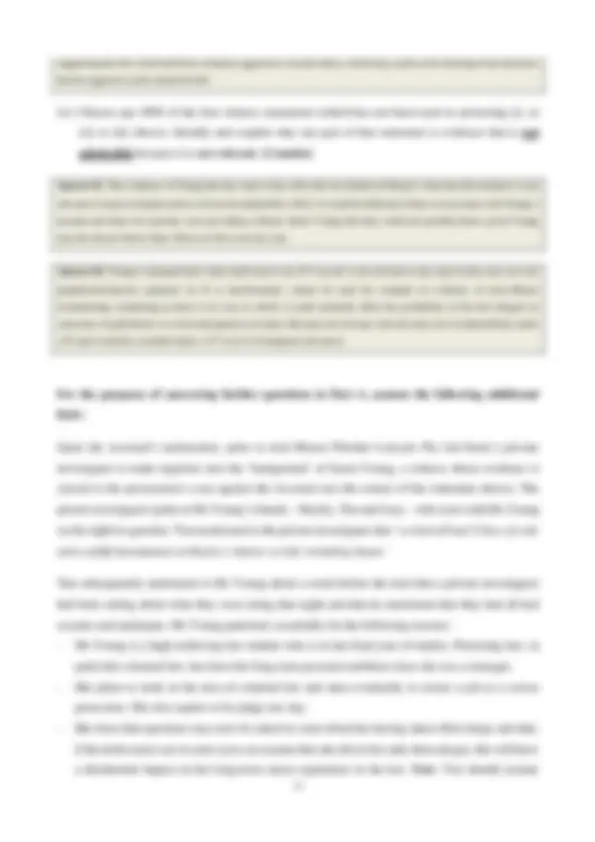
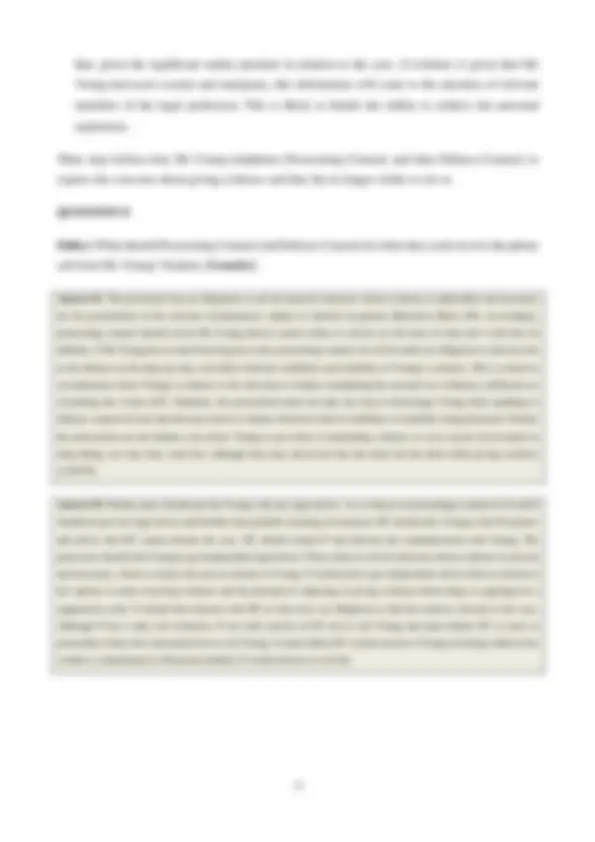
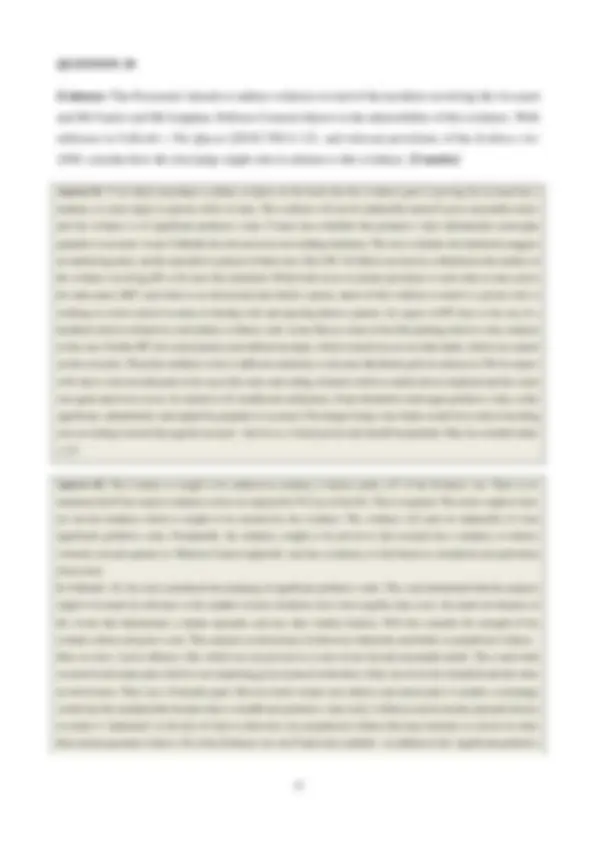
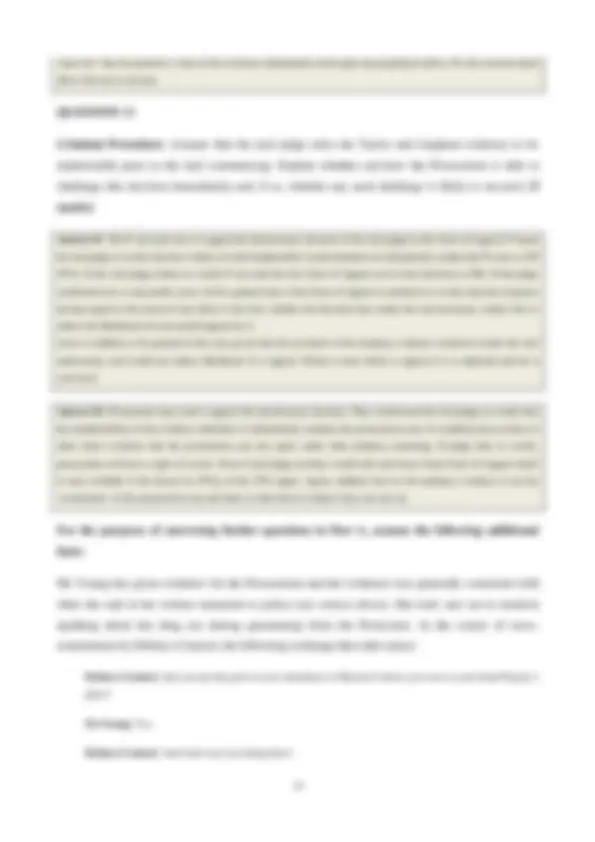
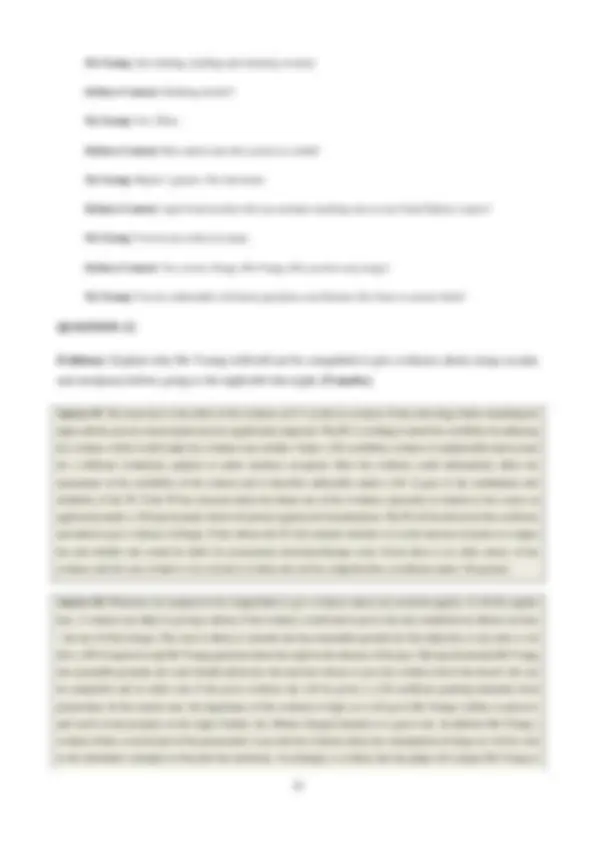
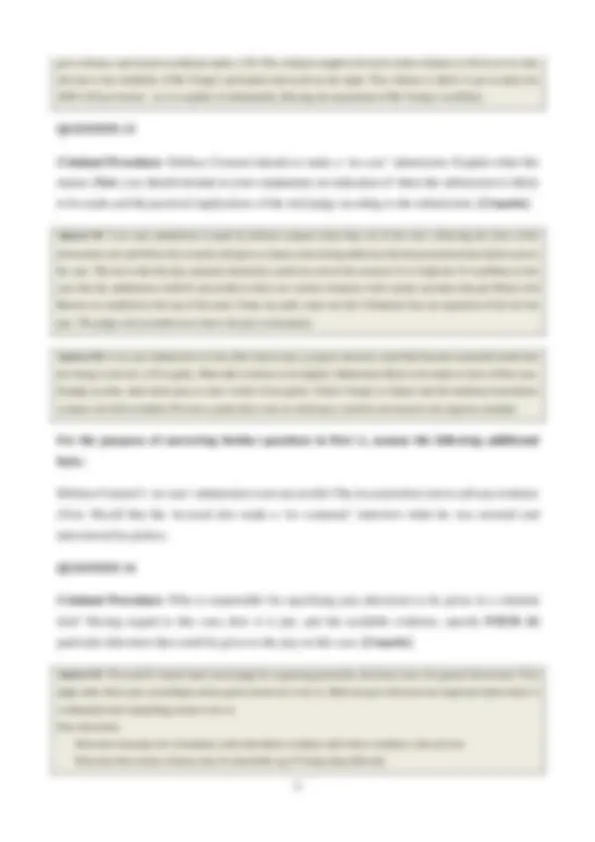
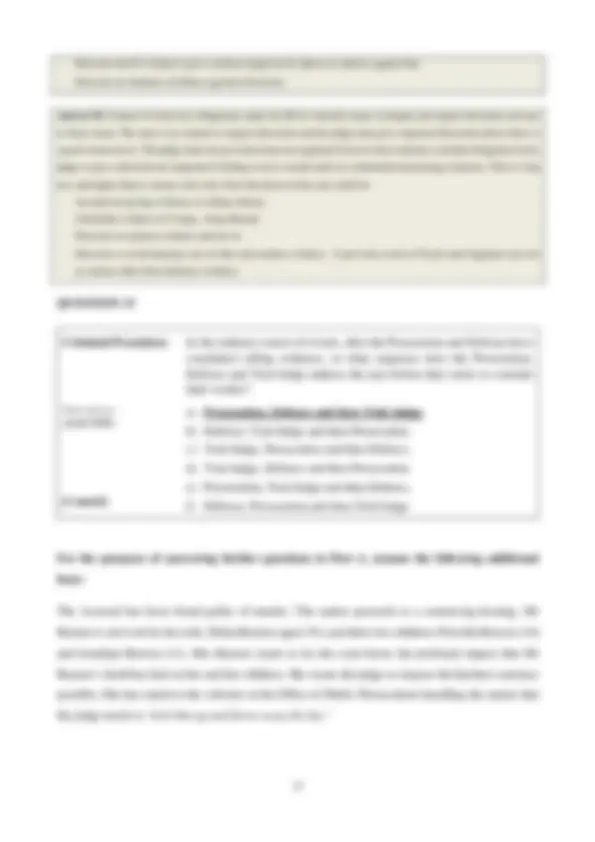
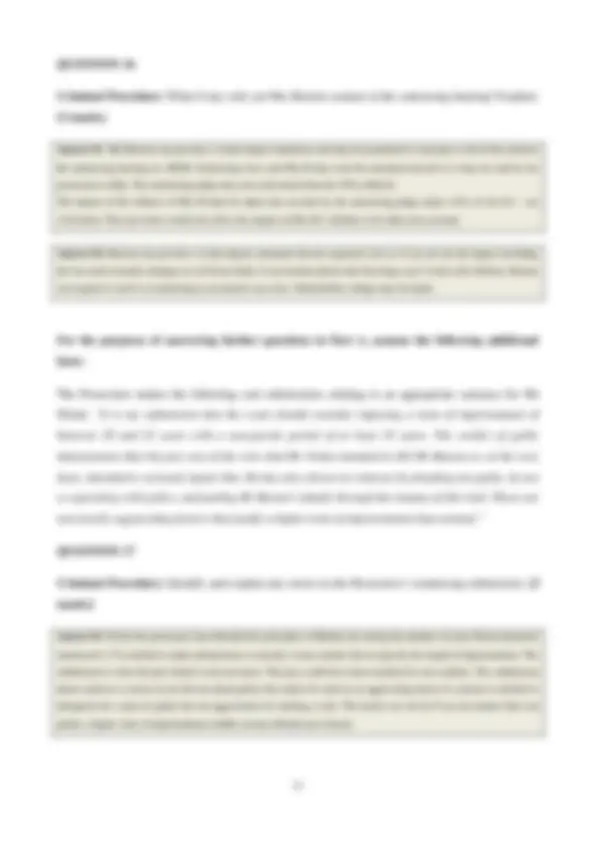

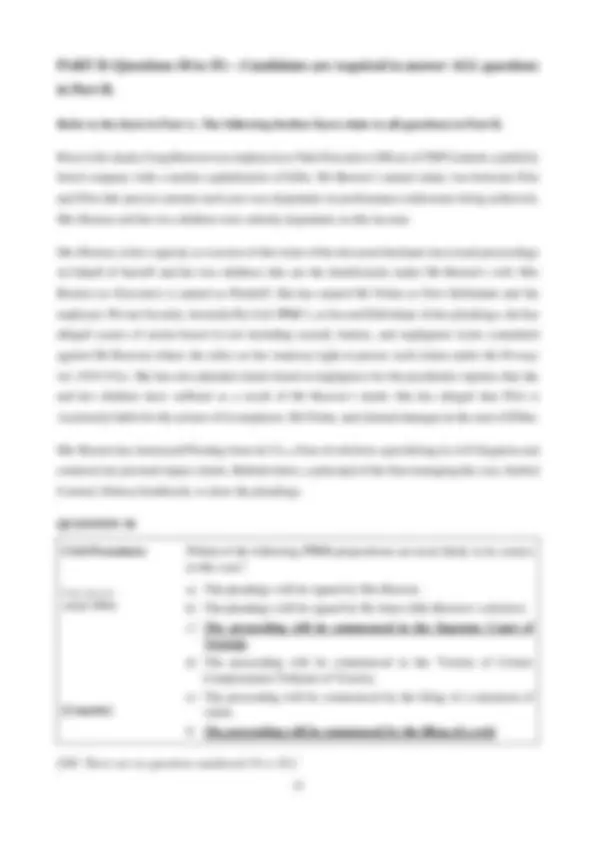
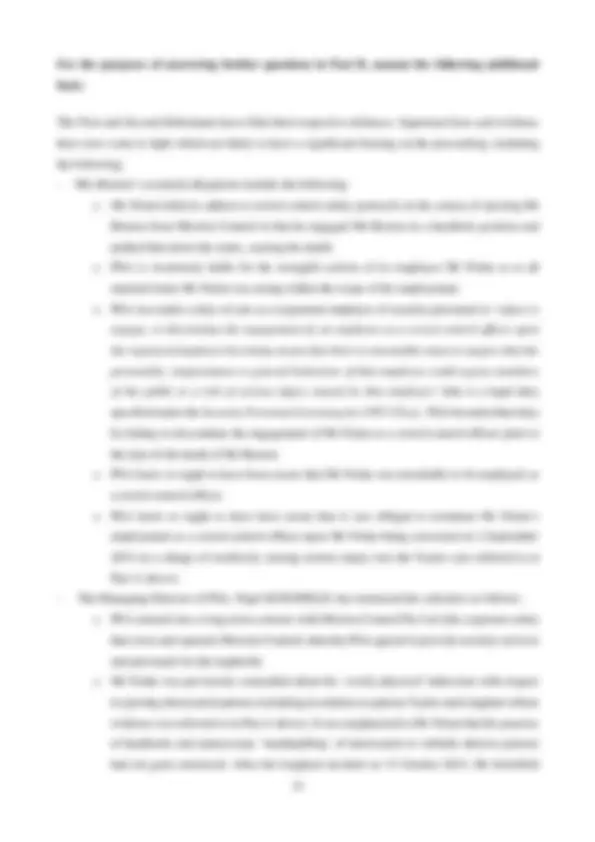
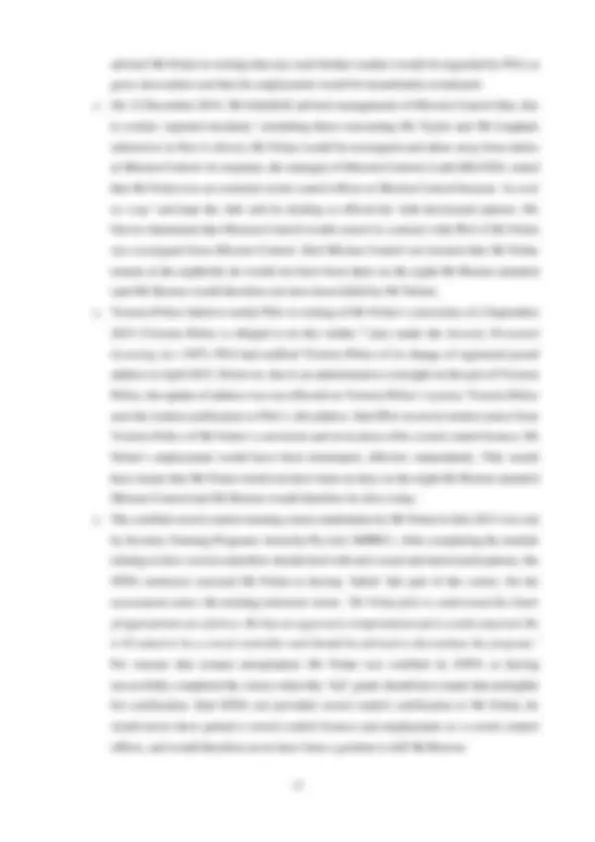
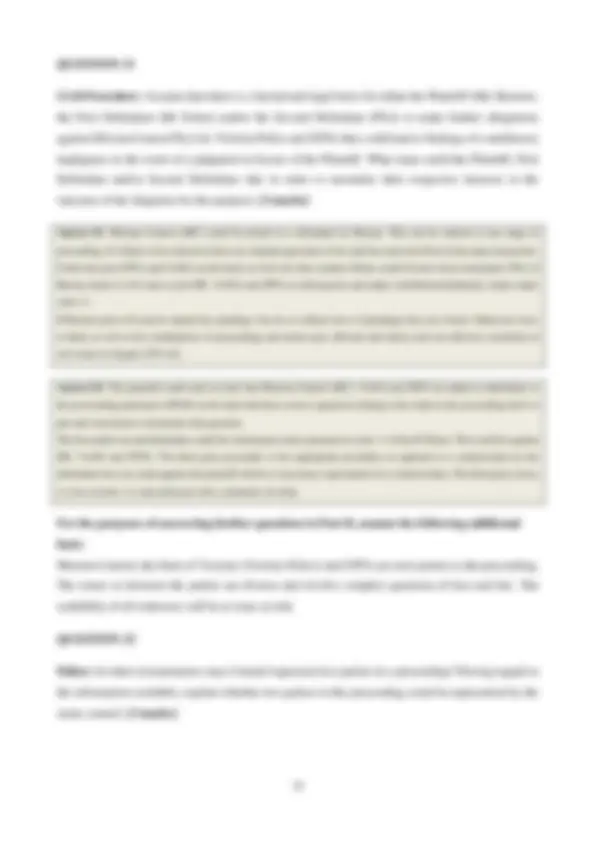
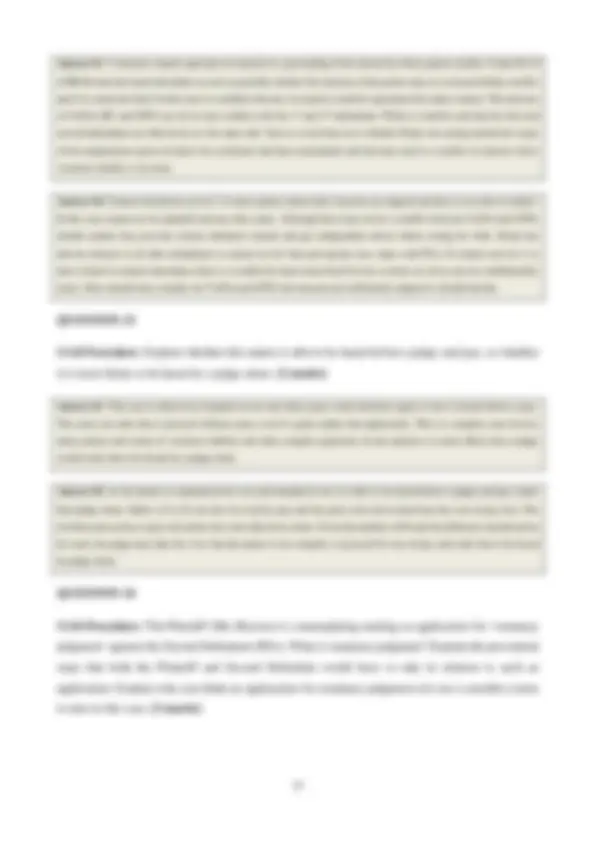
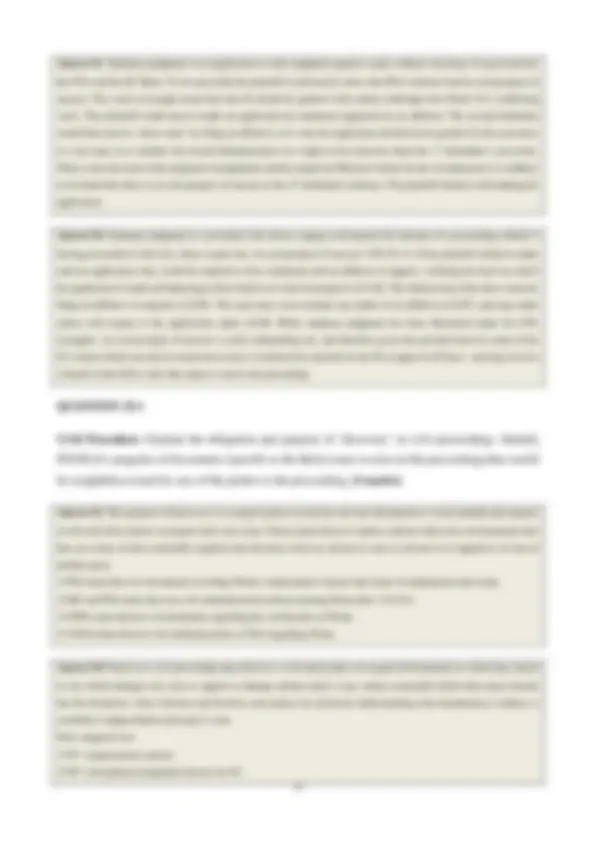
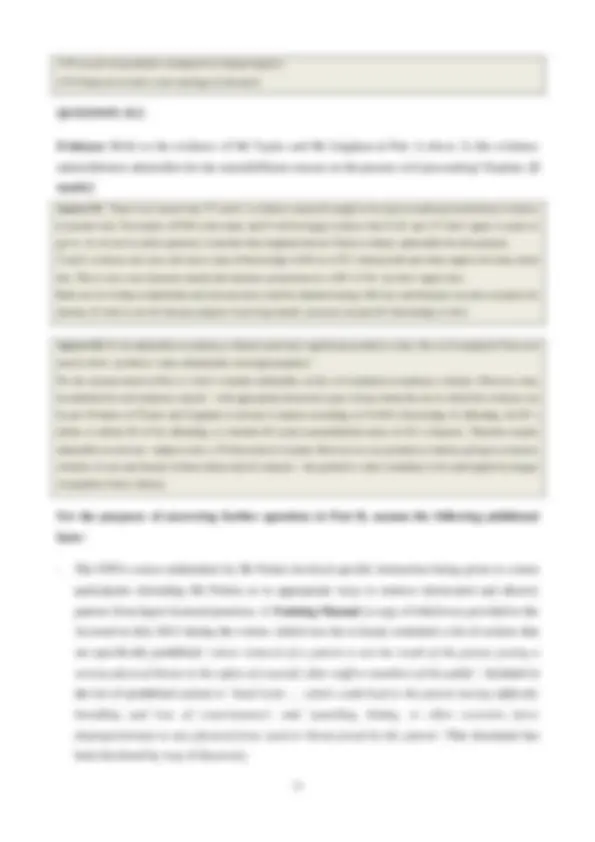
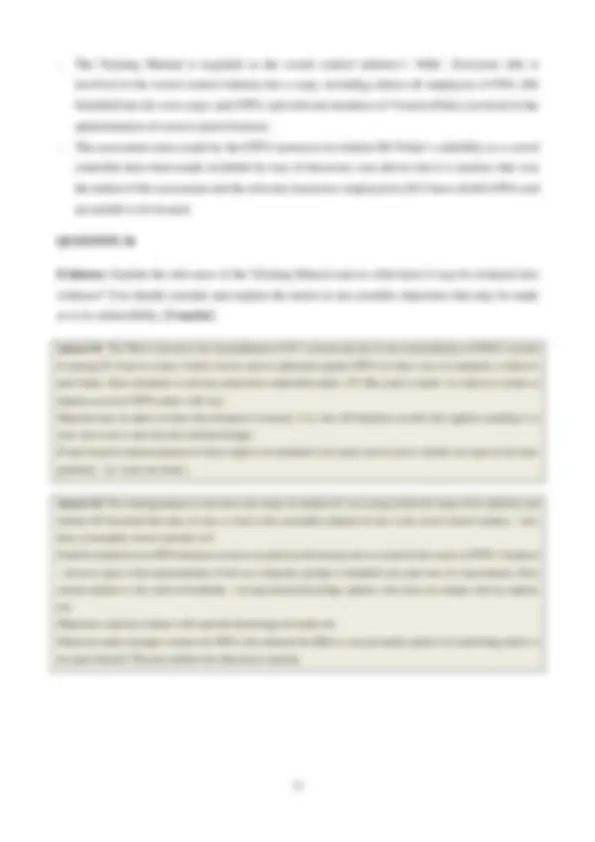
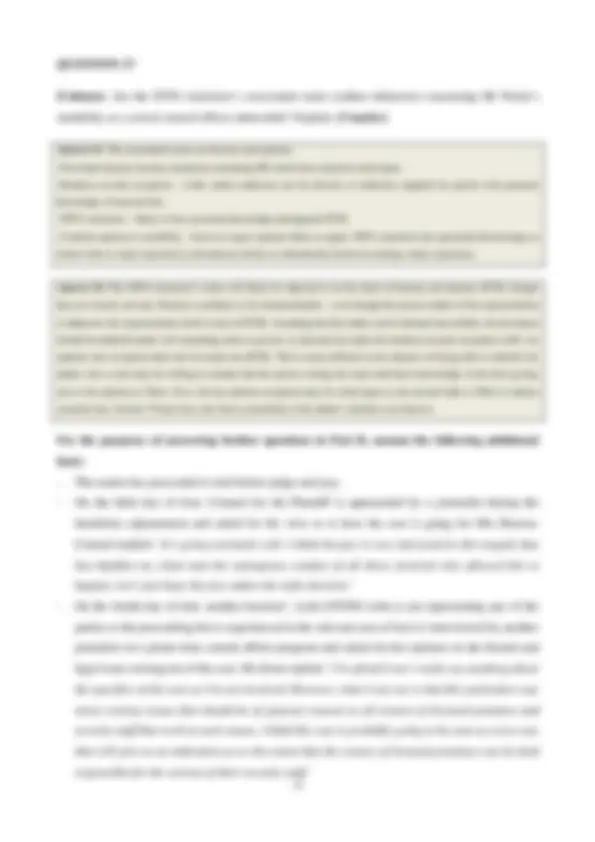
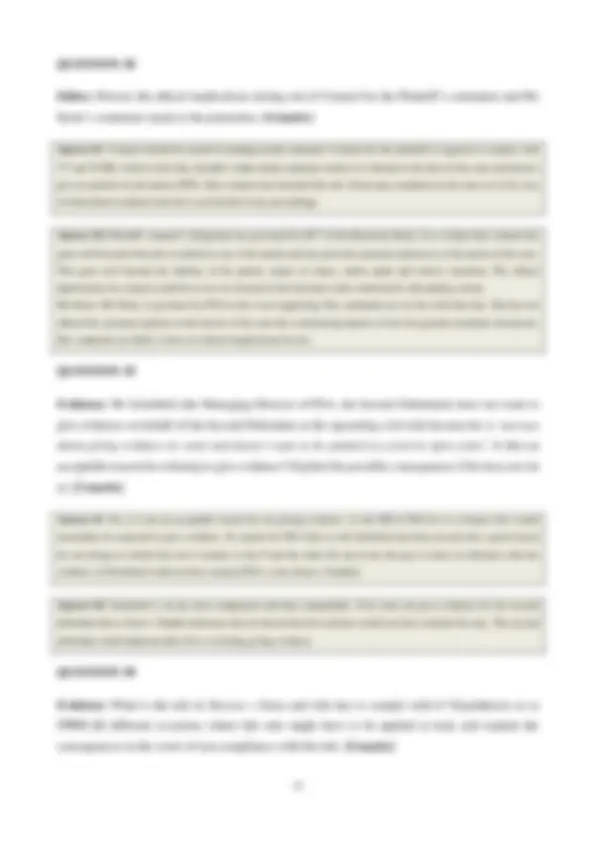
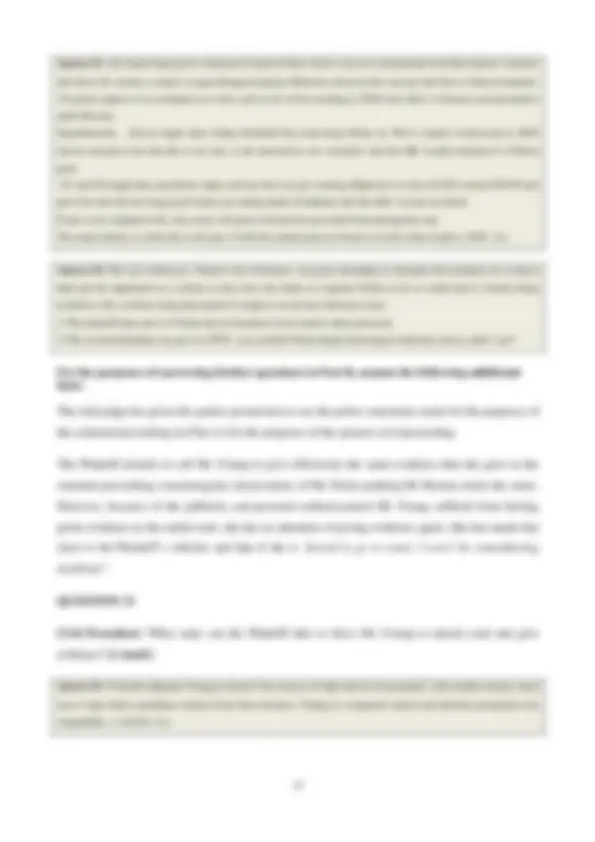
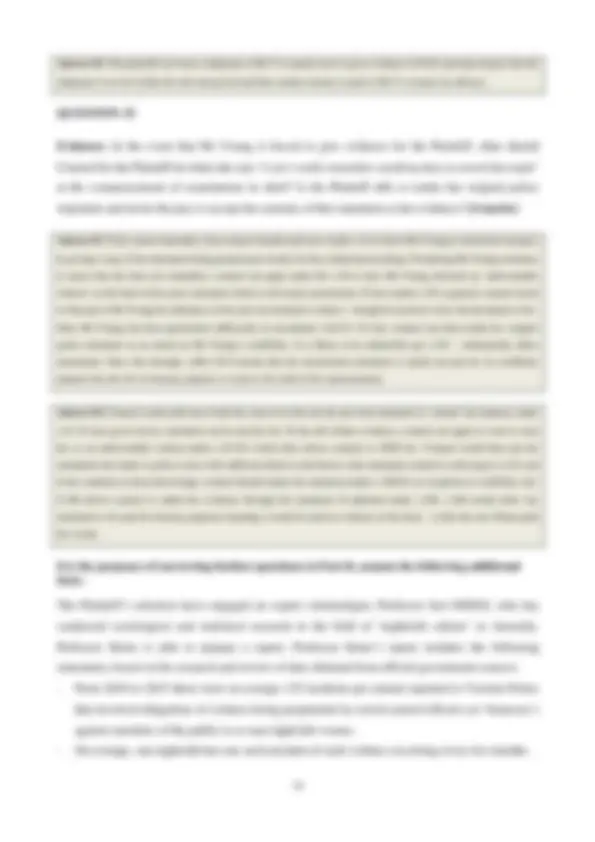
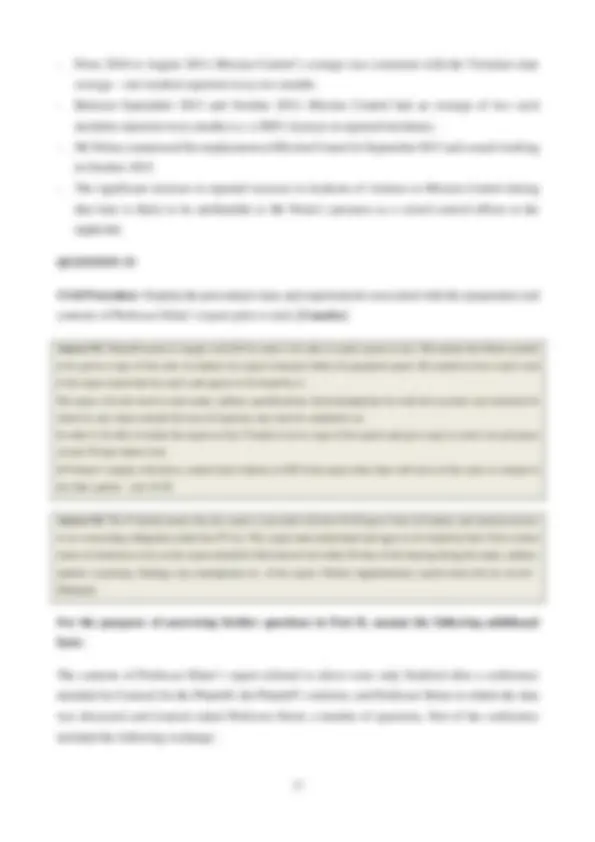
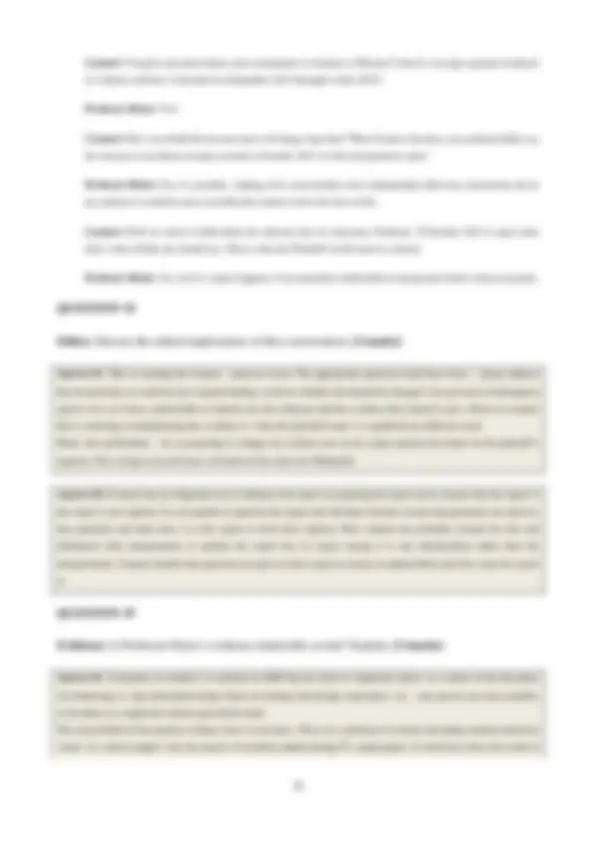
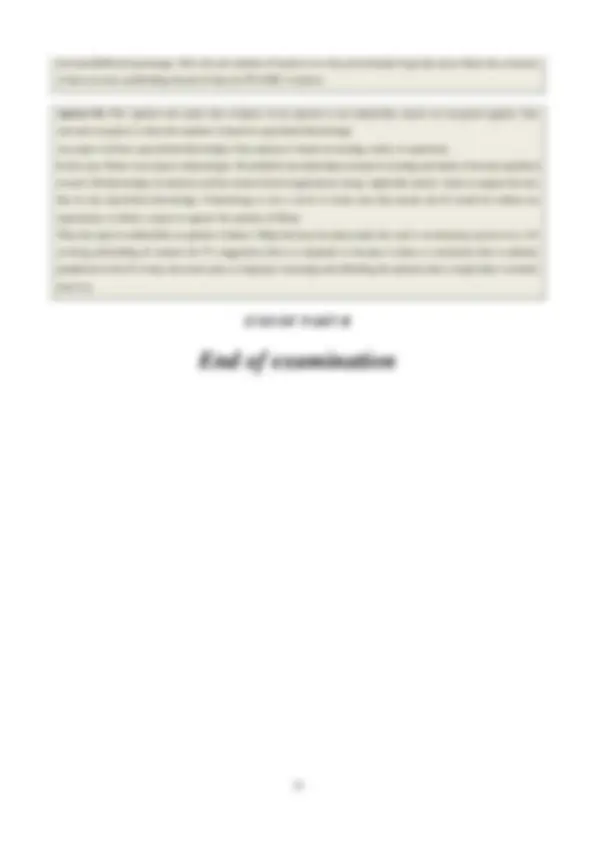


Study with the several resources on Docsity

Earn points by helping other students or get them with a premium plan


Prepare for your exams
Study with the several resources on Docsity

Earn points to download
Earn points by helping other students or get them with a premium plan
Community
Ask the community for help and clear up your study doubts
Discover the best universities in your country according to Docsity users
Free resources
Download our free guides on studying techniques, anxiety management strategies, and thesis advice from Docsity tutors
12 MAY 2016. (Annotated with sample answers). 1. This document is a reproduction of the Readers' Course Entrance Exam which candidates sat ...
Typology: Study notes
1 / 39

This page cannot be seen from the preview
Don't miss anything!
































Jason Harkess Chief Examiner 16 June 2016
During the exam, you must not be in possession of anything other than writing implements, this exam script, the hard copies of the Reading Guide and examinable excerpts of legislation, and the coloured noting paper that have been provided. You are not permitted to have in your possession any other paper, notes, books, electronic devices, mobile phones, pencil cases or any other items that have not been specifically authorised by the Chief Examiner and/or Invigilators of the exam. Any item on your person, on your chair, or on your desk are deemed to be in your possession.
Your Candidate Number (but not your name) appears at the top of this page. Your Candidate Number represents your unique identifier for the purposes of this exam. You have previously been advised in writing of the Candidate Number which has been assigned to you. Please ensure that the Candidate Number above matches the Candidate Number which has been assigned to you. You must not write your name on any page in this exam script.
This exam tests your knowledge and understanding of rules of Civil Procedure , Criminal Procedure , Evidence and Legal Ethics. The exam consists of two parts – Part A and Part B. You must answer all questions (and sub-questions) in both Parts of the exam. The total number of marks allocated to questions in the exam is 100, so that the maximum score attainable by any candidate is 100. A total mark of 75 or more is required to pass the exam.
Part A contains 17 questions (Questions 1 to 17) and is worth a total of 50 marks. Part A commences with a preliminary statement of facts giving rise to a hypothetical criminal proceeding. Questions 1 to 17 then follow. In answering Part A, you should assume that all questions are referrable to the preliminary statement of facts. Each question posed in Part A informs you of the following: (i) whether you are being tested on rule(s) of criminal procedure, evidence or legal ethics (but note paragraph 6 of these instructions below); and (ii) the total number of marks allocated to the question. The total number of marks allocated to each subject area in Part A is: Criminal Procedure (21 marks), Evidence (21 marks) and Legal Ethics ( marks).
Part B contains 18 questions (Questions 18 to 35) and is worth a total of 50 marks. Part B commences with a preliminary statement of facts giving rise to a hypothetical civil proceeding. Questions 18 to 35 then follow. In answering Part B, you should assume that all questions are referrable to the preliminary statement of facts. Each question posed in Part B informs you of the following: (i) whether you are being tested on rule(s) of civil procedure, evidence or legal ethics (but note paragraph 6 of these instructions below); and (ii) the total number of marks
TABLE – SUGGESTED TIME SPENT ANSWERING QUESTION BASED ON MARKS ALLOCATED Marks Time (approx.) 1 mark no more than 2 minutes 2 marks 3½ minutes 3 marks 5½ minutes 4 marks 7 minutes 5 marks 9 minutes 10 marks 18 minutes
During the 30 minutes of perusal and noting time prior to the commencement of the exam you must not write in this exam script. However: i) you may peruse this exam; ii) you may write in the coloured noting paper provided to you (but anything you write on this noting paper will not constitute part of your answer to any question in the exam);
You are not permitted to remove from the examination room:
i) this exam script; ii) the Reading Guide and examinable excerpts of legislation provided to you; iii) any additional writing paper provided to you; iv) the coloured paper provided for note-taking during the perusal and noting time prior to the commencement of the examination.
Assume the following Prosecution summary of alleged facts relates to all questions in Part A.
The Accused is Justin NOLAN and is 32 years old (born 02/02/1984). The Accused resides at 4/ Fenton Street, Preston, VIC 3072.
On Saturday, 3 October 2015, the Accused was a crowd control officer at Mission Control nightclub located at 19 Smith Street, Fitzroy (‘ Mission Control ’). The Accused is 188 cm tall, weighs 108 kilograms and has a solid muscular build. The Accused commenced his shift at 8.00 pm that evening and was assigned crowd control duties at the main public entry to the nightclub.
At approximately 11.15 pm the Accused was asked to assist other crowd control officers already inside the nightclub for the purposes of removing an intoxicated patron. The Accused made his way upstairs into the bar area of the nightclub. The Accused saw that two other crowd control officers, Leanne HENRY and Sasi FATEA, were involved in a verbal altercation with the Victim, Craig BUXTON. The Accused observed the Victim gesticulating towards Ms Henry and Mr Fatea and shouting at them ‘Fuck off! I’m not going anywhere!’. The Victim was intoxicated and was behaving in an aggressive manner. The Accused observed the Victim point aggressively at crowd control officer Ms Henry. The Victim’s finger made contact with Ms Henry’s chest.
The Accused ran over to assist Ms Henry and Mr Fatea. Because the Victim’s back was facing the Accused, the Victim did not notice the Accused’s arrival. Without warning, the Accused grabbed the Victim from behind and secured the Victim in a ‘headlock’ position. The Victim was 166 cm tall, weighed 68 kilograms and of slight build. The Victim attempted to escape the Accused’s brace but was unable to do so. The Victim shouted ‘Fuck off! Let me go you fucking cunt! Fucking let me go!’. The Accused said to the Victim ‘You’re outta here, cunt’. The Accused maintained the Victim in a headlock position as he led the Victim back towards the top of the stairs which led down to the main entry of the nightclub. The Victim became more agitated and continued to shout at the Accused ‘Let me go! I can’t fucking breathe! Fuck you, you fat cunt!’ as he struggled to escape the brace of the Accused’s headlock without success.
When the Accused reached the top of the stairs, he released his grip around the Victim’s neck and forcibly pushed the Victim towards the stairs and shouted ‘Fuck off!’ at the Victim. As a result of being pushed, the Victim lurched forward without control into the stairwell. The Victim was unable to regain his balance and tumbled uncontrollably down the two flights of stairs where he came to rest
Criminal Procedure:
Your answer: ( circle ONE )
[1 mark]
Following his arrest, which of the following propositions is most accurate concerning the issue of the Accused obtaining bail? a) There is a common law presumption in favour of bail and statute does not specifically deal with the Accused’s situation. b) There is a statutory presumption in favour of bail. c) There is a statutory presumption against bail because the Accused has been charged with murder, but bail may be granted if he can demonstrate that exceptional justifying circumstances exist. d) There is a statutory presumption against bail because the Accused, having been charged with murder, poses an unacceptable risk to the community if released. e) Bail must be refused under statute because the Accused has been charged with murder, unless the Accused can show cause why detention in custody is unjustified. f) Bail must be refused under statute absolutely because the Accused has been charged with murder.
QUESTION 2
Criminal Procedure: Your answer: ( circle ONE )
[1 mark]
In which court is the Accused most likely to stand trial? a) Magistrates’ Court of Victoria. b) County Court of Victoria. c) Victorian Court of Serious Criminal Offences. d) Federal Court of Australia. e) Supreme Court of Victoria. f) High Court of Australia.
QUESTION 3
Criminal Procedure:
Your answer: ( circle ONE )
[1 mark]
This case is likely to be tried before a judge and jury comprising how many randomly selected members of the public? a) 0. b) 1. c) 6. d) 10. e) 12. f) 16.
Criminal Procedure: What is an ‘indictment’? Explain how an indictment might be used in this proceeding. [2 marks]
Answer #1 : An indictment is a document filed in the Supreme or County Court setting out the name of the accused, the charge/s and particulars of the offence/s. An indictment must comply with Schedule 1 CPA (though not invalid for not doing so) and include the names of witnesses and sufficient particulars to identify the charge. In this case, an indictment naming Nolan as the accused would be filed in the Supreme Court after he is committed for trial and Nolan would be arraigned on it before the jury panel and possibly at a Directions Hearing prior to trial.
Answer #2 : An indictment must be in accordance with Schedule 1 of the Crim Procedure Act. It is to be filed by the DPP once the accused has been committed to stand trial. It should include a statement of the charge. For example, in this case it should state that the accused did on 3 October 2015 at approximately 11.15pm murder the victim Craig Buxton.
For the purposes of answering further questions in Part A, assume the following additional facts:
The Accused intends to plead not guilty to the charge. He has been committed to stand trial. The Accused has instructed that he largely accepts the Prosecution’s version of events, save for the following:
The Accused has retained Mason Fletcher Lawyers Pty Ltd, a specialist criminal defence law firm, to represent him. A principal solicitor of the firm, Jessica Mason, has received instructions to brief
Ethics: Your answer: ( circle ONE )
[1 mark]
Which of the follow propositions is correct? a) There is no general rule that prohibits a barrister from being a witness in a criminal proceeding in which that barrister is appearing as counsel for the Accused. b) A barrister acting for an Accused is prohibited from negotiating with the Prosecution with a view to compromising the case. c) A barrister acting for an Accused should avoid giving legal advice to the Accused. d) A barrister briefed to represent an Accused would ordinarily be expected to appear on the Accused’s behalf in court, and make submissions in furtherance of the Accused’s case. e) All of the above. f) None of the above.
For the purposes of answering further questions in Part A, assume the following additional facts:
The depositions include the following sworn statements of witnesses who the Prosecution intends to call to give evidence at trial:
shouted ‘Fuck off! I’m not going anywhere!’ Mr Buxton then pressed his finger into the top of my chest. I then noticed crowd control officer Justin Nolan come up from behind Mr Buxton. Mr Nolan said ‘You’re out of here mate’ or words to that effect. He put Mr Buxton into a headlock. Mr Buxton struggled to escape the headlock but he couldn’t. Mr Nolan then led Mr Buxton to the top of the stairs that descended to the main entry of the nightclub. Mr Fatea and I accompanied Mr Nolan as he held Mr Buxton in a headlock to make sure other patrons did not get in the way. I was walking next to Mr Nolan’s left side. He had Mr Buxton in a headlock under his right arm. Mr Fatea was walking next to Mr Buxton so that Mr Buxton was effectively being led to the stairs with Mr Nolan and Mr Fatea on either side of him. Mr Buxton continued to struggle and was screaming ‘Fuck off! Fuck off cunts!’. I could see Mr Nolan was having difficulty with Mr Buxton struggling to get loose, but he still managed to maintain the headlock as we walked towards the stairs. As Mr Nolan was about to lead Mr Buxton down the stairs, Mr Nolan jerked to the left unexpectedly which knocked me backwards. I fell onto the floor. I looked up and saw Mr Buxton falling towards the stairs. I did not see Mr Nolan pushing Mr Buxton at all. I think he must have finally struggled loose, lost his balance and that’s why he fell. It was all just a horrible accident.’
experience at bar such that she can tell who leaves/doesn’t – unlikely). Instead that statement is not properly based on any evidence and is largely speculative opinion. This part of Rix’s evidence ought not to be admitted.
Answer #2: Henry: The statement ‘I think he must have finally struggled loose, lost his balance and that’s why he fell’. This is Henry’s opinion and is not admissible to prove the existence of a fact about the existence of which the opinion was expressed. It is not admissible (s76). The lay opinion exception (s78) does not apply as Henry did not see the moment that the victim fell (as he had been knocked backwards onto the floor). He therefore cannot give an opinion about how the victim fell as his opinion is not based on what he saw, heard or otherwise perceived.
(ii) Choose any ONE of the four witness statements (which has not been used in answering (i) above). Identify and explain why a part of that statement is evidence of an opinion and is admissible as opinion evidence. [2 marks]
Answer #1 : Young – ‘The bouncer then shoved him really hard’. The evidence of the push being really hard is Young’s opinion and is prima facie inadmissible. However it is likely to be admitted as opinion evidence under the exception for lay opinions (s.78 EA) as the opinion is based on what she saw when Nolan pushed Buxton and it is necessary to obtain an adequate account of her perception of the event on the stairs.
Answer #2: The evidence of Henry that the victim was intoxicated is an opinion. It may be admissible under 1) lay opinion that Henry saw the victim thumping the bar, demanding alcohol and being very aggressive and swearing so the opinion is based on what she saw and heard. The evidence is necessary to obtain an adequate account of her perception of the matter – that is that the victim was intoxicated which is relevant to whether he may have fallen himself and whether accused had reason to restrain. The opinion is not as strong as if Henry actually saw victim consume many drinks but it is not a best evidence rule so likely to be admissible.
(iii) Choose any ONE of the four witness statements (which has not been used in answering (i) or (ii) above). Identify and explain why part of that statement is not evidence of an opinion and is admissible because it is relevant. [2 marks]
Answer #1 : Young’s statement that D ‘shoved’ V is not an opinion – she says she has personal knowledge of/observed him doing so. It is relevant to proving D caused death and did so consciously voluntarily and deliberately. Indeed it appears to be the only direct evidence on these points.
Answer #2: Henry’s evidence as to the interactions between the victim and the security guards (recounting the conversations between the victim, Rix, Fatea and herself) is not opinion evidence but is rather evidence of what she directly perceived – no inferences are sought to be drawn from these direct perceptions within Henry’s witness statement: The evidence is clearly relevant – it rationally affects the probability of a fact in issue (s55 EA) as it makes the prosecution’s version of events – that the accused’s actions were conscious, voluntary and deliberate – less likely by
suggesting that the victim had been extremely aggressive towards others, which may assist in the drawing of the inference that his aggressive jerk caused his fall.
(iv) Choose any ONE of the four witness statements (which has not been used in answering (i), or (ii) or (iii) above). Identify and explain why one part of that statement is evidence that is not admissible because it is not relevant. [2 marks]
Answer #1 : The evidence of Young that she went to the club with two friends of Hayley’s that she did not know is not relevant to issues in dispute and so will not be admissible s.56(2). It would be different if there was an issue with Young’s account and these two persons were providing evidence about Young that they could not possibly know given Young says she doesn’t know them. However this is not the case.
Answer #2: Young’s statement that ‘other staff went to see if V was ok’ is not relevant to any issue in this case, save for prejudicial/character purposes (ie D is hard-hearted), cannot be used for example as evidence of post-offence incriminating conducting as there is no way in which it could rationally affect the probability of the fact alleged (ie conscious of guilt/desire to avoid consequences of same). Because not relevant, fails the basic test of admissibility under s.55 (and would be excluded under s.137 even if of marginal relevance).
For the purposes of answering further questions in Part A, assume the following additional facts:
Upon the Accused’s instructions, prior to trial Mason Fletcher Lawyers Pty Ltd hired a private investigator to make inquiries into the ‘background’ of Susan Young, a witness whose evidence is crucial to the prosecution’s case against the Accused (see the extract of her statement above). The private investigator spoke to Ms Young’s friends – Hayley, Tim and Lucy – who were with Ms Young on the night in question. Tim mentioned to the private investigator that ‘we had all had 2 lines of coke and a spliff [marijuana] at Hayley’s before we left, including Susan.’
Tim subsequently mentioned to Ms Young about a week before the trial that a private investigator had been asking about what they were doing that night and that he mentioned that they had all had cocaine and marijuana. Ms Young panicked, essentially for the following reasons:
Evidence: The trial judge has expressed concern to Counsel about the ‘grubby language’ appearing in many of the witness statements. His Honour states to Counsel: ‘ I’m minded to order that none of the witnesses can make any kind of reference to the words “fuck” and “cunt” in their evidence. It is foul language that the jury simply doesn’t need to hear. In any event, it’s all probably inadmissible because it’s irrelevant and hearsay. Does Counsel have any concerns about me making this order?’ What should the Prosecutor and Defence Counsel each say in response? [3 marks]
Answer #1 : Pros should say that evidence is not hearsay – apparently each conversation will be attested to by a person w/ person knowledge of it. Eg. Fatea can say V swore at him. Not attempting to use conversations to prove asserted facts. Pros should also argue that evidence is relevant as it goes to the state of mind of each participant, eg. D’s swearing at V could rationally affect the probability that D did intend to cause death/really serious injury. Finally Pros should point out that juries are assumed to be robust, and their sensibilities are not a concern that should override the need to put all evidence before the Court. D counsel should agree, especially as it is probably in D’s interests to use the V’s swearing to relevantly suggest he was very drunk and aggressive, increasing the likelihood that he stumbled down stairs, possibly while attacking D/others. Finally each counsel should take care to explicitly object to judge’s proposals as may otherwise be precluded from using it as appeal point.
Answer #2: Prosecutor: 1/ The swearing is relevant as it goes to issues of whether the victim was intoxicated (not very probative but an inference can be drawn in combination with the other evidence) and whether accused was acting aggressively, evidence about victim not helpful to prosecution case but has obligation to present all relevant evidence, so should be admissible s.56. Prosecution will argue swearing of accused is relevant as goes to issue of intention of accused
For the purposes of answering further questions in Part A, assume the following additional facts:
In order to be employed or contracted as a crowd control officer in Victoria, it is a legal requirement that the individual concerned possess a current crowd control licence issued by Victoria Police. Licences are issued only after a criminal record check and successful completion of a certified crowd
control training course. The situation with respect to the Accused’s crowd control licence is as follows:
value test’ that the probative value of the evidence substantially outweighs any prejudicial effect. For the reasons stated above this test is not met.
QUESTION 11
Criminal Procedure: Assume that the trial judge rules the Taylor and Lingham evidence to be inadmissible prior to the trial commencing. Explain whether and how the Prosecution is able to challenge this decision immediately and, if so, whether any such challenge is likely to succeed. [ marks]
Answer #1 : The P can seek leave to appeal the interlocutory decision of the trial judge in the Court of Appeal. P needs the trial judge to certify that the evidence if ruled inadmissible would eliminate on substantially weaken the Ps case (s. CPA). If the trial judge refuses to certify P can seek that the Court of Appeal review that decision (s.296). If the judge certifies/review is successful, leave will be granted only if the Court of Appeal is satisfied it is in the interests of justice having regard to the extent of any delay to the trial, whether the decision may render the trial necessary, reduce fine or reduce the likelihood of a successful appeal by A. Leave is unlikely to be granted in this case given that the exclusion of the tendency evidence would not render the trial unnecessary and would not reduce likelihood of A appeal. Nolan is more likely to appeal if it is admitted and he is convicted.
Answer #2: Prosecution may seek to appeal this interlocutory decision. They would need the trial judge to certify that the inadmissibility of the evidence eliminates or substantially weakens the prosecution case. It is unlikely here as there is other direct evidence that the prosecution can rely upon, rather than tendency reasoning. If judge fails to certify, prosecution will have a right of review. Even if trial judge certifies, would still need leave from Court of Appeal which is only available if the factors in 297(a) of the CPA apply. Again, unlikely here as the tendency evidence is not the ‘cornerstone’ of the prosecution case and there is other direct evidence they can rely on.
For the purposes of answering further questions in Part A, assume the following additional facts:
Ms Young has given evidence for the Prosecution and her evidence was generally consistent with what she said in her written statement to police (see extract above). She took care not to mention anything about her drug use during questioning from the Prosecutor. In the course of cross- examination by Defence Counsel, the following exchange then takes place:
Defence Counsel: And you say that prior to your attendance at Mission Control, you were at your friend Hayley’s place? Ms Young: Yes. Defence Counsel: And what were you doing there?
Ms Young: Just chatting, drinking and listening to music. Defence Counsel: Drinking alcohol? Ms Young: Yes. Wine. Defence Counsel: How much wine did you have to drink? Ms Young: Maybe 2 glasses. Not that much. Defence Counsel: Apart from alcohol, did you consume anything else at your friend Hayley’s place? Ms Young: I’m not sure what you mean. Defence Counsel: Yes you do. Drugs, Ms Young. Did you have any drugs? Ms Young: I’m not comfortable with these questions your Honour. Do I have to answer them?
QUESTION 12
Evidence: Explain why Ms Young will/will not be compelled to give evidence about using cocaine and marijuana before going to the nightclub that night. [5 marks ]
Answer #1 : The issue here is the effect of the evidence on Y’s credit as a witness. If she took drugs before attending the night club her powers of perception may be significantly impaired. The DC is wishing to attack her credibility by adducing the evidence which would make her evidence less reliable. Under s.102 credibility evidence is inadmissible unless used for a different evidentiary purpose or under statutory exception. Here the evidence could substantially affect the assessment of the credibility of the witness and is therefore admissible under s.103. It goes to the truthfulness and reliability of the W. If the W has concerns about the future use of her evidence especially in relation to her career an application under s.128 may be made which will protect against self-incrimination. The W will be advised of the certificate and asked to give evidence willingly. If she refuses the TJ will consider whether it is in the interests of justice to compel her and whether she would be liable for prosecution elsewhere/foreign court. Given there is no other source of her evidence and the case at hand is very serious it is likely she will be compelled but a certificate under 128 granted.
Answer #2: Witnesses are assumed to be compellable to give evidence unless an exclusion applies. S.128 EA applies here. A witness can object to giving evidence if the evidence would tend to prove she has committed an offence (as here